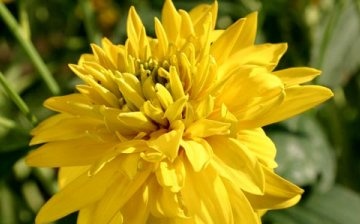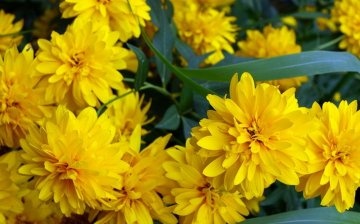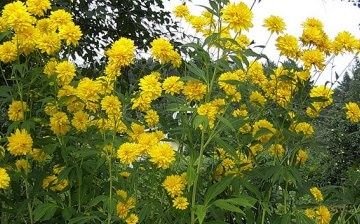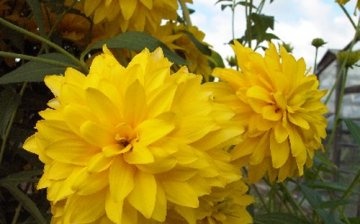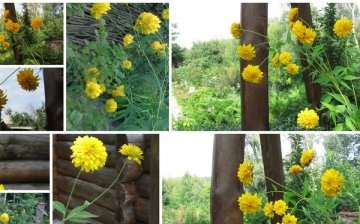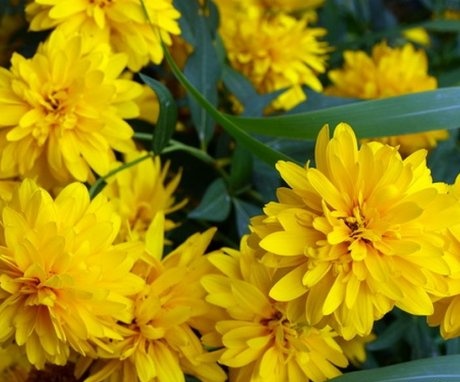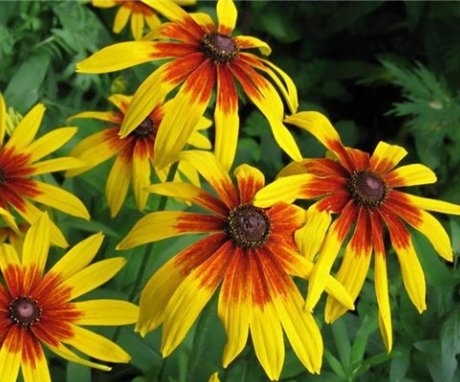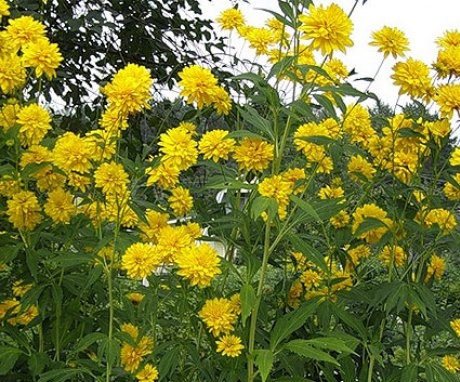Rudbeckia dissected: characteristics, types and agricultural techniques of the plant
Rudbeckia is an unpretentious plant, so it can be easily grown in a summer cottage or in a garden. Despite the fact that she loves sunny, well-warmed places, flowering will be, even if the flower is placed in partial shade. Prefers light, loamy soil. A perennial can not be transplanted for 6-8 years.
Content:
- General information about rudbeckia
- Types of rudbeckia
- Care for dissected rudbeckia
- Plant propagation
- Application of dissected rudbeckia
General information about rudbeckia
Rudbeckia belongs to the aster family... This is an unpretentious plant. There are both annual and perennial representatives. Rudbeckia can often be seen both in decorative landscape compositions and in ordinary summer cottages of the European and Asian zones. However, its homeland is North America, it was from these distant lands that sunny and bright flowers arrived in the 16th century.
Rudbeckia has erect stems with dense foliage, their height ranges from 50 cm to 2 meters, depending on the species.
The flowers are inflorescences from 5 to 15 cm, they are yellow, orange, golden, purple or pink in color. Leaves are oblong, can be whole or split.
Types of rudbeckia
Rudbeckia has many types, there are about 40 of them. But only a few of them have become popular. This is due to the ease of maintenance and the beautiful color of the flowers.
- Rudbeckia dissected is a perennial plant. It acquired the second name "golden ball" due to its appearance during flowering, when yellow flowers cover almost the entire bush. Cut rudbeckia stems can grow up to 2 meters. The leaves are oblong, divided into three parts. The flowers are approximately 10 cm in diameter, and the flowering period begins in mid-summer and lasts 2 months.
- Rudbeckia is beautiful in height and reaches 60 cm and is a perennial plant. Leaves are elliptical, elongated, serrated at the edges. The flowers are colored in an orange-yellow tone and have a brown center, which protrudes slightly upward. The flower is about 10 cm in diameter. The flowering period begins in July and lasts until mid-autumn.
- Rudbeckia is glossy. This perennial grows up to 2 meters in height. Its leaves are oval, oblong and have a slight sheen. The flowers are large, up to 12 cm in diameter, have bright yellow elongated petals and a convex green core. Flowering begins in mid-summer and can continue until late autumn, until frost begins.
- Rudbeckia lustrous or radiant... This is a perennial of short stature. Its branches can stretch only 60 cm. The leaves are oval, smooth, pointed at the end. Small flowers can reach 9 cm in diameter. The color of the petals can be orange, yellow or golden yellow. The middle is dark, almost black. Blooms from mid to late summer.
- Rudbeckia hairy. This species is a perennial, however, it is most often grown as a biennial. Its height can reach 1 meter, there are also 50 cm representatives of hairy rudbeckia. The leaves and stems are pubescent. The flowers are large, up to 10 cm in diameter. There are simple and terry.The color of the petals is yellow or orange-yellow. The middle is large, painted in a dark purple tone. The flowering period lasts from July to autumn frosts.
- Rudbeckia purpurea is known to gardeners and summer residents as echinacea purpurea. But it has no medicinal properties and belongs to ornamental plants. Plant height is about 1 meter. Stems and leaves are slightly pubescent. The flowers are large, the petals are lilac-pink, the center is convex, dark. Blooms from mid-summer to mid-autumn.
- Enveloping rudbeckia. It is an annual species that has a unique flowering. The petals are colored yellow or brown-orange and are pulled down, as if clasping the stem. The middle is dark and rises 2 centimeters above the petals.
Care for dissected rudbeckia
Rudbeckia needs regular and abundant wateringespecially during hot and dry summers. Since its roots are shallow, the soil around the flower should be moist. Therefore, on hot days it is necessary to water it 2-3 times.
It is also worth fertilizing the plant regularly.
This is especially true for perennial species. Well suited for this organic and mineral fertilizers... During the season, feeding is done 4 times with an interval of 3 weeks. It is also worth regularly removing dried leaves and inflorescences. This is more of a decorative care.
Most perennials are frost-resistant, but due to the fact that the roots are located close to the surface, it is recommended to pour soil and fallen leaves under the plant for the winter. This procedure will keep the roots warm and prevent them from drying out. Rudbeckia is susceptible to attack by spider mites and leaf-gnawing caterpillars, so you should carefully examine the plants. When signs of diseases or pests appear, treat with chemicals.
Plant propagation
Annual species of rudbeckia reproduce using seeds. Perennials can also be propagated by dividing the rhizome. When propagated by seeds, sowing takes place in early spring, late March or early April.
This requires:
- Prepare containers with a mixture of peat and sand. Since the rudbeckia seeds very small sow they are lightly sprinkled with earth on top of the substrate and on top.
- Next, you need to cover the container with seeds with foil or glass and put it on the windowsill.
- Watering is done regularly with a spray bottle.
- Also worth air the seedssometimes removing film or glass for a short period of time.
- The temperature in the room where rudbeckia is grown should not be less than 18 degrees.
- After 3 weeks, shoots should appear, after which the greenhouse is removed.
- The container is placed in the brightest place for further germination.
- Watering should be regular and abundant.
It is best to choose a warm period for planting in open ground, when the ground is already warmed up. For this, the middle or end of May is suitable. Seedlings are planted in prepared holes at a distance of 30 cm.
Reproduction by dividing the rhizome occurs when a perennial is transplanted.
To do this, after abundant watering, a bush is carefully dug out. The rhizome is divided into several parts and planted in pre-prepared pits in a bright, sunny place. It is advisable to carry out such a procedure in early or mid-May.
Application of dissected rudbeckia
Due to the fact that the flowering of rudbeckia begins in the middle of summer and lasts mainly until the first frost, it immediately won a place in the gardens. Bright flowers attract attention and delight the eye.
The plant goes well with other decorative flowers and bushes, looks great in compositions. It is applied for park decoration, gardens. Low-growing species are often planted in flower beds. Bushes look beautiful near gazebos and near houses.
More information can be found in the video.



